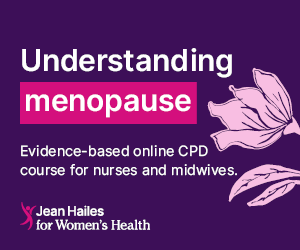Handover is one of the most essential tools in updating colleagues of a patient’s current health status and treatment plan.
Whether it is a taped or verbal handover, in a room or at the bedside, a good clinical handover requires effective communication to enable continuity of care.
According to Flinders University, a handover requires a nurse to:
- Communicate objectively, appropriately and concisely with other health professionals;
- Understand and use medical/nursing terminology;
- Interpret charts and other documents;
- Write up patient observations; and
- Understand clinical procedures.
Here are five tips to polish your handover technique:
Be organised
Try to follow an organised sequence when handing over: patient details, presenting complaint, significant history, treatment and plan of care.
Include clinical observations, pathology results, procedures etc. Don’t forget to highlight allergies, and relevant patient history and other medical conditions.
Sometimes you may need to go back or forward but try to keep to an order so colleagues can easily follow you. Importantly, what is the plan of care for the next shift?
Stay focused
Stay relevant. Don’t handover everything that’s happened to a patient throughout the shift; sometimes this takes confidence and experience in knowing what’s important to leave in or out. It’s ok if not much has occurred during your shift, don’t make up for it with waffle or gossip. Reaffirm the patient’s current status and plan of care – and move on.
Communicate clearly
Be concise and speak clearly. Emphasis key needs or concerns, such as if the next set of observations or IV antibiotics are due imminently. Use relevant medical and nursing terminology. Avoid abbreviations or being ambiguous. If you are handing over to a new graduate or junior member of staff, explain any anomalies to a patient’s care or treatments they might be unfamiliar with. Check your colleague is listening and attentive – if they’re distracted, ask a question.
Be patient-centred
It’s not just the clinical information that is important, what has your patient’s mood been like? Are they flat, depressed, anxious, concerned, teary? Pass on any specific concerns or needs of your patient. If you have an intuition something isn’t right but your patient is clinically stable, mention it – trust and share your nurse’s sixth sense.
Allow time
Use handover time wisely. Whilst effective time management includes the clinical handover, it’s critical that all important information is relayed. Try not to rush or speak too fast, particularly for a taped handover report. Be open and encourage questions if it’s a verbal handover. If a colleague seems unsure of what you are saying, repeat or explain what you have said.
Ineffective handovers can lead to adverse events, delays in care and complications. Time taken to provide an effective handover can lead to timely, quality care and good patient outcomes.









4 Responses
I agree that a good handover is essential. I am a RN and work in aged care. The typical time allocated to overlap of shifts and handover is 15 minutes. In an aged care home with 120 residents this is ludicrous, however it seems to be the norm.
First of all I am very thankful to you. It is very glad to read the article. This article helps the people to gain their knowledge in the specific field.
I would like to share some details where it helps the people to gain knowledge
https://nursingcare.nursingconference.com/asia-pacific/
15 mins Hanover in aged care is impossible. Let’s say my shift finish at 2:30, next shift starts at 2:15. Technically next shift can sign in at 2:15, will take 5 mins to get them organised and ready for handover. Now we have 10 mins time for handing over 66 people which is not possible at all. This ends up previous shift to stay back without pay. This is everyday thing and trusting however nobody speaks up.
This is a very useful piece, I am transferring this knowledge to my student. However, it is impossible to get an effective handover within 15 minutes even with 25 residents. We will be missing something out if care is not taken.
Funmilayo Banjo